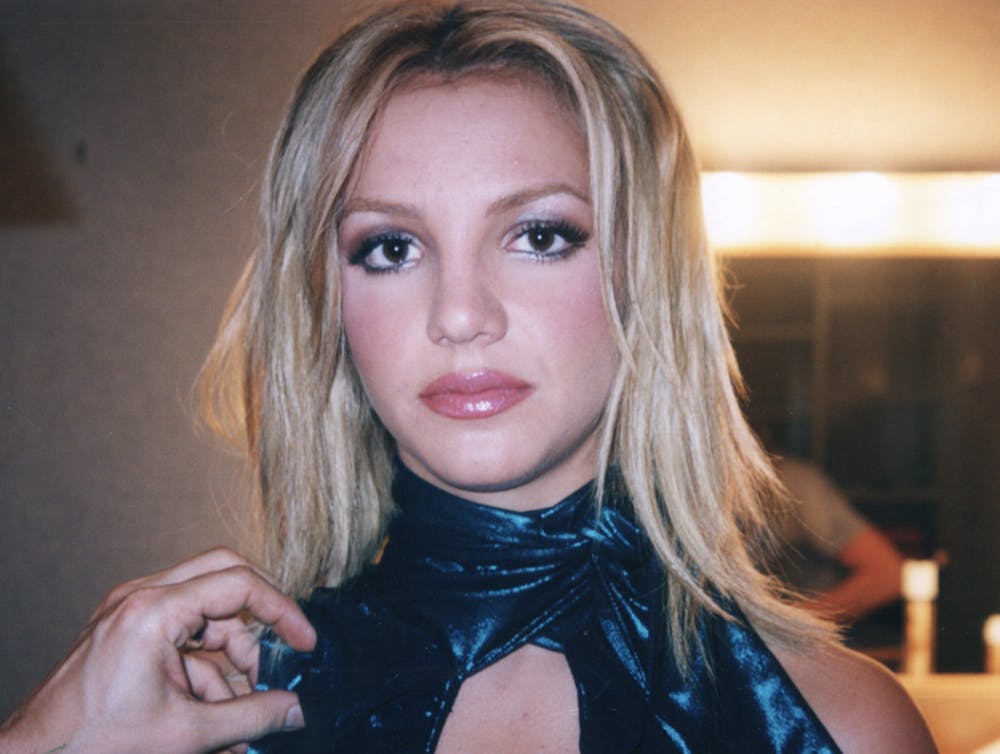“LEAVE HER ALONE,” cries Chris Crocker. “LEAVE BRITNEY ALONE!”
Lost in the annals of the Charlie-bit-my-finger-meme-era, the “Leave Britney Alone” video was an instant hit when it came out in 2007. After Crocker first posted it on Youtube, audiences indulged in the aggressively crazed hysterics of a Britney Spears superfan. Thirteen years later, “Leave Britney Alone” is still relevant, but now, people are taking Crocker seriously.
With the release of the New York Times’ “Framing Britney Spears,” “Leave Britney Alone” defines a growing movement to hold media outlets accountable for the media frenzy surrounding Spears. The investigative documentary traces her rise — and precipitous fall — as a teenage girl navigating a misogynistic music industry. Interspersed with testimonies from paparazzi and her personal assistant, “Framing Britney Spears” chronicles how an idealistic tabloid industry and the consequent conservatorship battle suffocated the star.
In archival footage from her 1992 “Star Search” appearance, host Ed McMahon asks a blunt question of a ten-year old Britney: “Do you have a boyfriend?” From there, the documentary strings together an extensive history of increasingly probing questions posed by media figures. “Everyone’s talking about it,” interviewer Ivo Niehe tells a teenage Britney. “Your breasts.” In several other clips, interviewers ask Britney the age-old question: “Are you a virgin?”
In that regard, “Framing Britney Spears” functions as an alarmingly accurate time capsule of the media’s — and our own — expectations for women, both in the early 2000’s and years later. A radio host asked Ariana Grande if she would rather go without her phone or her makeup; a senior celebrity reporter asked Scarlett Johansson if she wore underwear beneath her Black Widow costume; a MTV reporter asked Rihanna what she was looking for in a man, to which she succinctly responded, “I’m not looking for a man. Let’s start there.”
When “journalists” are perfectly comfortable with interrogating a teenage girl about her virginity, it signifies a larger truth about how we routinely commodify and profit off of womens’ bodies and sexualities as a cheap form of entertainment. Glaringly sexist journalistic behaviors teach consumers to feed into these societal expectations too: to reduce women to who they have sex with, what they look like or how they raise children.
Another particularly striking moment in the documentary revolves around Britney’s public head-shaving meltdown in 2007. At the peak of her tabloid popularity, the paparazzi were unafraid to invade the most private aspects of her life. “I don’t want anyone touching me,” she said when shaving her head. “I’m tired of everybody touching me.”
Yet, the paparazzi continued to probe into her life: “That night was not a good night for her… But it was a good night for us, because it was a money shot,” the photographer of the Britney umbrella shot says in the documentary.
In dissecting Spears’s mainstream press coverage, we can find larger universal trends of misogyny and insensitivity towards mental health in the media: more often than not, we treat womens’ bodies and their sexualities as public domain to be consumed for entertainment. In this process, we trade off a woman’s privacy, sense of sanity and mental health in exchange for our personal consumption.
At the peak of Clinton’s impeachment scandal, we were fed inaccurate, sensationalized media narratives of Monica Lewinsky. In a Jay Leno monologue, the host ridiculed her weight and speculated about her sex life: “Monica Lewinsky has gained back all the weight she lost last year… She told reporters she was even considering having her jaw wired shut, but then, nah — she didn’t want to give up her sex life.” Through media characterizations of Lewinsky as a “young tramp looking for thrills,” a “ditsy, predatory white house intern,” we were taught implicitly to view Monica as the semen-smeared perpetrator. Prominent media outlets prioritized profit and virality over Lewinsky’s mental state.
In the age of social media, things have somewhat changed: Britney Spears infamously posts close-up dancing videos and closet tours on her Instagram feed, granting her some agency to control her own digital narrative, and many social media outlets like Glamour have apologized for their past wrongdoings after tremendous social media pressure.
But perhaps media outlets are not the only ones to blame. Why were these media outlets willing to shell out thousands for photos of Spears’ meltdown? There was demand. As consumers, we more often than not support these problematic pop cultural narratives, mindlessly clicking through clickbait-y articles from the DailyMail about Ariel Winter’s boob job. We too are complicit. As Chris Crocker belligerently warned us in 2007, it’s time we leave Britney — and thousands of other women who have been mistreated and disparaged by the media — alone.
Get The Chronicle straight to your inbox
Signup for our weekly newsletter. Cancel at any time.
Derek Deng is a Trinity senior and a recess editor of The Chronicle's 119th volume.

